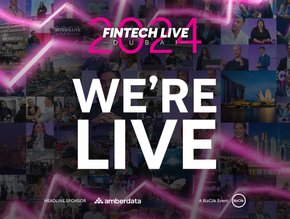How has digital transformation driven change in banking?

As millennials become the largest generation in terms of both the make-up of the workforce and the weight of their consumer value - by 2020 close to half of the global workforce will be millennials - the expectations for how services like banking should function has changed dramatically.
Coming of age in the digital era and entering adulthood alongside the dawn of the smartphone, this group has come to expect instant access to information and a slick digital experience.
While nobody of any age enjoyed filling out paper forms, tedious queuing or trudging to a distant bank branch in the rain, digital natives simply won’t abide by it.
Likewise, as Generation Z are now entering adulthood, a failure to meet these new digital demands comes at the peril of legacy organisations.
Challenger banks such as Monzo and Starling swiftly recognised and responded to this shift.
Taking an experience-first approach, these innovators built apps that cut the busy-work out of banking. Focusing on simplifying the experience of everyday tasks - splitting a meal with friends, checking your balance or counting up the bills for the month, for example - led to skyrocketing user growth and fundamental changes in the way banking functions.
SEE MORE:
- How important is digital leadership in banking?
- Digital banking fintech Meniga raises £7.6mn funding
- Mastercard launches Fintech Express in Europe
- Read the latest edition of FinTech Magazine, here
Understanding the needs of this new generation, as well as the unheard wishes of the customers of traditional banks that came before them, sounds simple.
However, understanding those needs was only the first step. Responding to them required the ability to adapt and align rapidly.
To meet a fundamental change in customer expectations, fintechs required a fundamental change in the way the workplace functions.
Building an agile work environment has been central to fintech’s ability to innovate. Monzo made agility central to its operation from the very beginning.
With over 1.3 million customers, the bank relies on channel-based communication, rather than email, to connect key teams and coordinate its response to incidents such as outages.
Moving quickly can mean hitting bumps in the road, but by coordinating rapidly through channels to respond to any issues in real-time, Monzo has been able to scale at a phenomenal rate while still offering the world-class customer experience it has built its name upon.
Monzo’s approach represents a better way of working together. By replacing email, which works poorly and limits each person’s view with channels, which are transparent and designed from the bottom-up to offer a rich permanent, searchable record of knowledge, organisations can coordinate and align more easily.
For more information on all topics for FinTech, please take a look at the latest edition of FinTech magazine.
Follow us on LinkedIn and Twitter.






